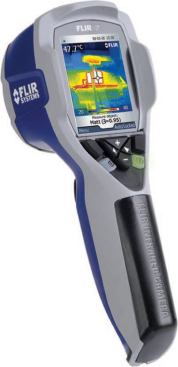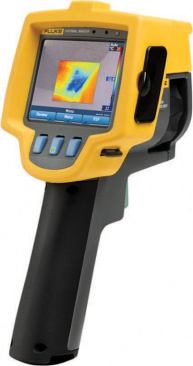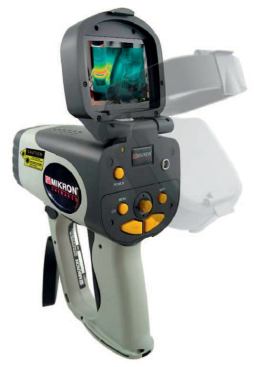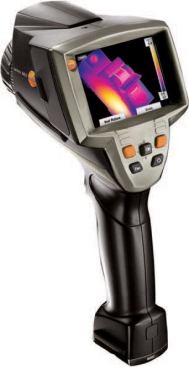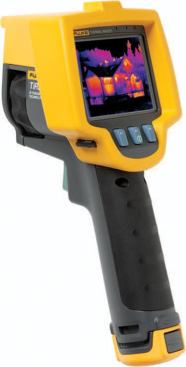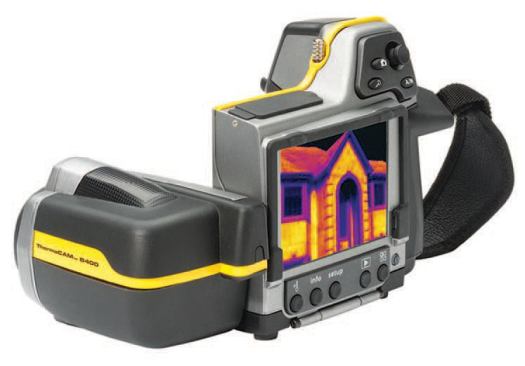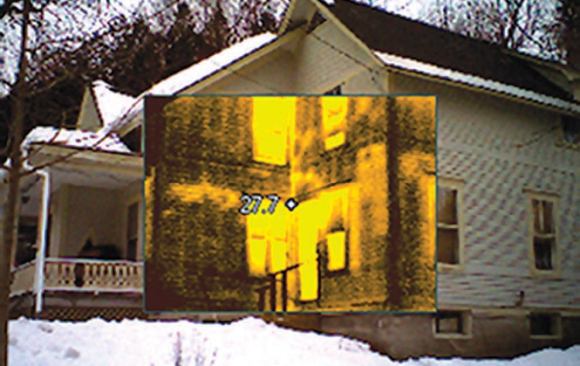The FLIR i7 is a good-quality entry-level camera.
Shopping for an IR Camera
Nearly all manufacturers of IR imagers now sell their products through distributors. You can go online and buy systems from literally dozens of sellers, some of whom sell several competing brands. Although this can lead to excellent prices if you shop around, be aware that it also means there may very little post-sale support from the seller. Imagers are typically quite trouble-free, but if you do have problems you’ll probably end up dealing directly with the manufacturer.
While there are several excellent sites that specialize in building-efficiency tools, I’ve found online sellers of contractor-grade power tools to be equally competitive. You can expect to pay between $2,500 and $3,500 for an entry-level system – suitable for fairly regular use by a general contractor – and $5,000 or more for a system sensitive enough for everyday use by an energy specialist or insulation contractor.
Sensitivity. One of the most basic properties of an IR camera is its sensitivity, which refers to the minimum variation in surface temperature it can detect. Sensitivity is rated in units called millikelvin (mK), or thousandths of a degree on the Kelvin scale; the lower the mK figure, the finer the temperature differences an instrument can detect. Most commercially available systems fall into the 30- to 100-mK range, with 30, 50, 70, and 100 mK being most common.
A 100-mK camera is basically an entry-level instrument. It can be useful when there’s a substantial delta-T, but a more sensitive model will be usable for more hours each day, and for many more days in the course of a year. If you’re going to invest in a camera that you hope to use year-round, I strongly recommend one rated at 50 mK or better.
Array size. An IR camera is built around an array of miniature detector elements, and the number of individual elements in the array determines how “fine-grained” the images it provides are. A 160 x 120 array, for example, has 160 rows of detectors, each of which contains 120 individual elements, with each element contributing one pixel to the final image. More pixels means more detail for a given field of view.
A 160 x 120 array is a reasonable choice for residential work, though a 120 x 120 array can be used for limited work. For large buildings or commercial structures, a 320 x 240 array will give much better results. I suggest you stay away from systems with arrays less than 120 x 120.
Here are some other factors to keep in mind:
• Ergonomics. There are many good systems on the market, nearly all of which can work well. But if possible, try one for several hours before purchase.
• Radiometric temperature measurement. In most situations, you do not need to be able to measure temperatures, although many cameras will provide the radiometric temperature of a single spot at the center of the image. That’s more than adequate for most residential applications.
I’m skeptical of the “dewpoint indicators” and “insulation indicators” offered by several manufacturers. When we’re confronting a condensation issue, we will manually determine the dewpoint in a particular area based on the relative humidity. The same holds true for evaluating missing insulation. I’m not convinced that this can successfully be automated – at least not yet.
• Focus. Manual focus tends to work very well. Auto-focus systems can work well, but typically are not necessary. Some of the very low-cost systems are fixed focus (marketing departments like to call this “focus free”), which can work but significantly limits image sharpness.
• Fusion of visual and thermal images. Fusion overlays the thermal image on the visual image or inserts the IR within the visual so you can see where you are while also seeing the IR image (see photo, bottom right). While not essential, this feature is more than just a gimmick. After I’ve looked at a dozen buildings in a week and taken a hundred images at each one, I can use a little help in remembering where I was! Image fusion simplifies good documentation and can also be persuasive in marketing materials. Be aware that some image fusion systems work better than others, so try before you buy.
• Lenses. Most entry-level systems come with a “normal” lens. Being able to change to a wide-angle or telephoto lens – though nice – will drive the price up to approximately $10,000 for the whole system.
• Image processing and reporting software. You’ll need software – typically included – to make simple image adjustments and basic reports. Keep it simple; more complex, expensive software is usually unnecessary.
